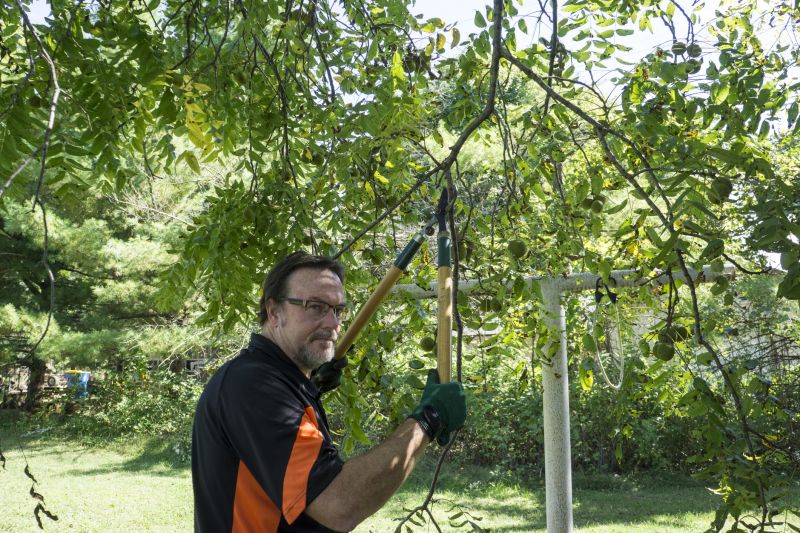Leading Tools for Tree Trimmings You Can Count On
Explore top-rated tools designed to make your tree trimming tasks easier, safer, and more efficient for any yard or garden.
 In Hendersonville, Tennessee, maintaining healthy and attractive trees often involves regular trimming and pruning. A variety of products are available to assist homeowners and professionals in this task, each designed to make tree trimming safer, more efficient, and more precise. From manual tools to powered equipment, the right selection depends on the size of the trees, the scope of the trimming project, and personal preferences. Proper tools can help ensure that cuts are clean and that the process minimizes stress on the tree, promoting healthy growth.
In Hendersonville, Tennessee, maintaining healthy and attractive trees often involves regular trimming and pruning. A variety of products are available to assist homeowners and professionals in this task, each designed to make tree trimming safer, more efficient, and more precise. From manual tools to powered equipment, the right selection depends on the size of the trees, the scope of the trimming project, and personal preferences. Proper tools can help ensure that cuts are clean and that the process minimizes stress on the tree, promoting healthy growth.
Top Overall Option
Multi-Functional Tree Trimming Kit
A comprehensive tree trimming kit that includes various hand tools, extendable poles, and safety accessories, designed to accommodate a range of trimming needs. Its versatile nature makes it suitable for both amateurs and experienced users aiming for precise cuts and safe operation.
Types of Products For Tree Trimmings
Pruning Shears
Ideal for trimming small branches and shaping trees with precision.
Loppers
Designed for cutting thicker branches that are out of reach for standard shears.
Pole Pruners
Extendable tools that allow trimming of high branches without climbing.
Chainsaws
Power tools suitable for larger branches and trunk sections, offering efficient cutting capacity.
Hand Saws
Manual saws for detailed cuts and smaller branches.
Hedge Trimmers
Useful for shaping and trimming dense foliage around trees.
Safety Gear
Protective equipment including gloves, goggles, and helmets to ensure safe trimming sessions.
Replacement Blades
Additional blades for maintaining sharpness and prolonging tool efficiency.
Extension Poles
Accessories that extend reach for high branches, compatible with various tools.
Tree Climbing Gear
Harnesses and ropes designed for safe access to tall trees during trimming.
Popular Choices
A handy tool for quick and precise trimming of small branches.
Suitable for cutting thicker branches with leverage and ease.
Portable and easy-to-handle chainsaw for medium-sized branches.
Allows reach to high branches without ladder use, with adjustable length.
Essential protective gear for comfortable and safe trimming sessions.
Compact saw ideal for detailed cuts and small branches.
Efficient for trimming dense foliage around trees and shrubs.
Keep your chainsaw performing at its best with sharp, fresh chains.
Provides safety and support for accessing tall trees during trimming.
Offers head and face protection during heavy-duty trimming tasks.
Durable poles that extend your reach for high branches.
Portable and easy to store, suitable for quick trimming jobs.
Powered options that reduce manual effort for frequent trimming.
All-in-one kits that include a selection of essential trimming tools.
When choosing products for tree trimmings, it is important to consider safety features such as non-slip grips, safety guards, and ergonomic designs. Durability and material quality also play a significant role in ensuring that tools withstand regular use. Whether you are trimming small ornamental trees or larger, more mature specimens, there are options suited for each task. Additionally, accessories like extendable poles, replacement blades, and protective gear can enhance the overall trimming experience and safety.
Proper storage and maintenance of trimming tools are essential for longevity and performance. Cleaning blades after use, sharpening them regularly, and storing tools in a dry, secure place can extend their lifespan. For those new to tree trimming, understanding the different product types and their specific uses can help in making informed purchasing decisions. This knowledge ensures that each trimming session is productive and safe, ultimately supporting the health and appearance of your trees.
Key Buying Considerations
- Tree size and branch thickness: select tools capable of handling the branches you intend to trim.
- Frequency of use: invest in durable tools if you plan to trim regularly.
- Safety features: look for tools with safety guards, ergonomic handles, and protective gear compatibility.
- Power source: choose between manual, electric, or battery-powered tools based on convenience and power needs.
- Reach and extension: consider tools with extendable features for high or hard-to-reach branches.
- Blade sharpness and replacement options: ensure blades are easy to sharpen or replace to maintain cutting efficiency.
- Weight and ergonomics: select lightweight tools with comfortable grips to reduce fatigue during extended use.
- Storage and organization: consider storage solutions or tool kits for easy access and maintenance.
- Budget and quality balance: prioritize tools that offer good performance and longevity within your budget.
- Compatibility: verify that accessories and replacement parts are compatible with your existing tools.
- Environmental conditions: choose corrosion-resistant tools if working in humid or variable weather.
- User skill level: select tools that match your experience, from basic manual tools to advanced powered equipment.
- Transportability: consider size and weight if you need to carry tools to different locations.
- Noise levels: be aware of noise output, especially when working in residential areas.
- Maintenance requirements: select tools that are easy to clean, sharpen, and store.
